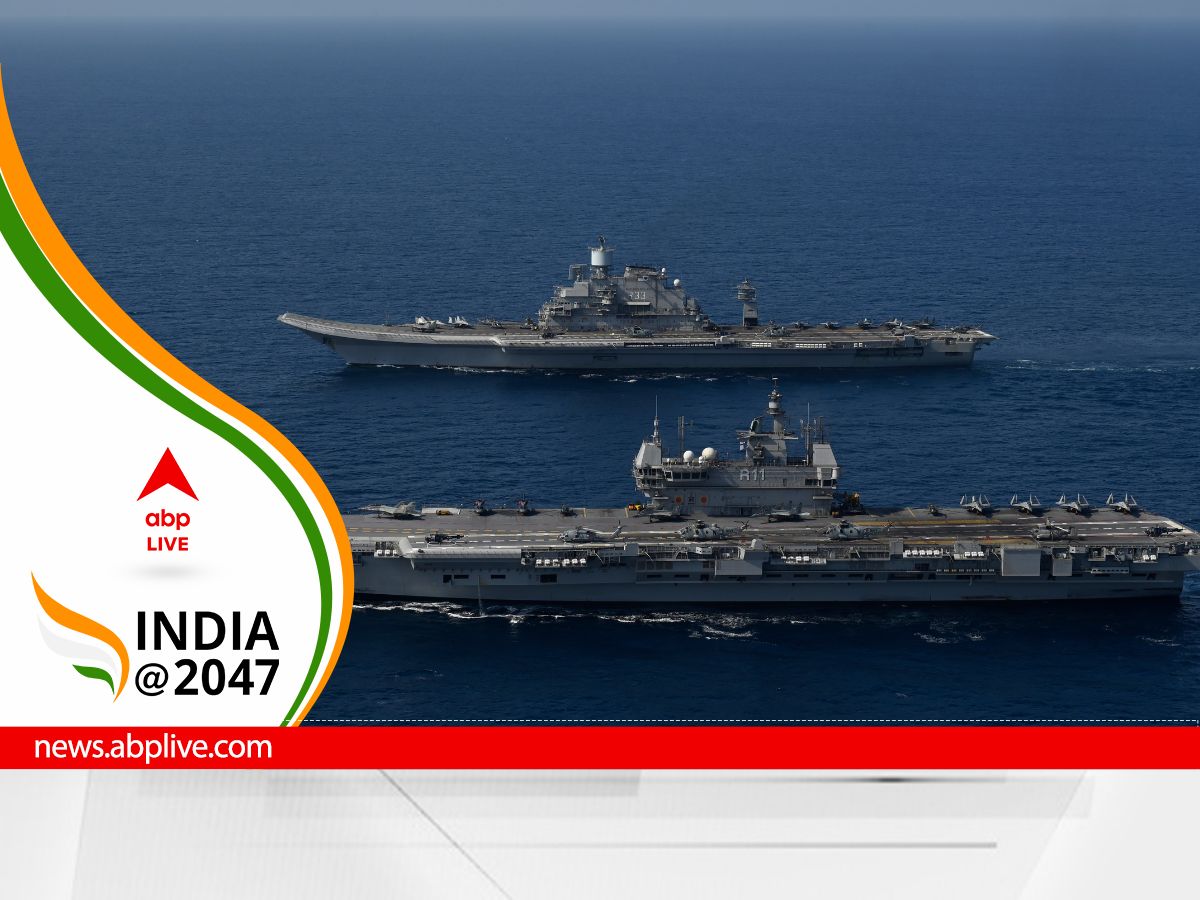New Delhi: The Indian Navy's recent exercise, featuring twin-carrier operations in the Carrier Battle Group (CBG) format, was intended to send a "strong message" to China. The exercise highlighted that New Delhi has taken a quantum leap in the maritime security domain, multiple sources told ABP Live.
In a massive show of strength, the Indian Navy Saturday carried out multi-carrier operations and the coordinated deployment of more than 35 aircraft in the Arabian Sea. The exercise involved the seamless integration of two Aircraft Carriers INS Vikramaditya and the indigenously built INS Vikrant- along with a diverse fleet of ships, submarines and aircraft, showcasing India's “technological expertise in the maritime domain”, said the Indian Navy.
The first-of-its-kind exercise was conducted not just to showcase to the world India’s “growing prowess” in the maritime domain, but to also send a message to China that India is “not just equal but ahead of Beijing’s naval power”, a top-ranking official, who did not wish to be named, told ABP Live.
The official also said India has gone a step ahead of China by showcasing the maiden night landing of MiG-29K fighters INS Vikrant last month.
According to the Navy, Saturday’s exercise “marks a significant milestone in the Indian Navy's pursuit of enhancing maritime security and power projection in the Indian Ocean, and beyond”.
INS Vikramaditya and INS Vikrant, which were centrepieces of the exercise, served as 'floating sovereign airfields', providing a launch platform for a wide array of aircraft, including MiG-29K fighter jets, MH60R, Kamov, Sea King, Chetak and ALH helicopters.
The Navy also said a demonstration of naval prowess underscores “India's commitment to safeguarding its national interests, maintaining regional stability, and fostering cooperative partnerships in the maritime domain”.
Acting as mobile bases, INS Vikramaditya and INS Vikrant can be positioned anywhere, allowing for increased mission flexibility, timely response to emerging threats and sustained air operations to safeguard our national interests across the globe.
According to another official, China has “noted” the exercise even as it will continue to pressure India at the Line of Actual Control (LAC) by doing incursions.
The border standoff between India and China has entered its third year even as troops along with heavy artillery continue to stand on both sides.
Shekhar Sinha, former FOC-in-C, Western Naval Command and Chief of Integrated Defence Staff, said: “China is watching with great interest. They will wish to see how much progress we have made because their Navy is quite far from reaching this kind of professional deployment.”
He said India has been carrying out this kind of operation since 1960 but China has started this recently. "So, this will surely give them anxiety. If they are planning to bring their carriers or flotillas in the Indian Ocean they will have to think twice,” said Sinha, co-founder of DeepStrat, a New Delhi-based think tank.
He also said, China will now “think twice” before bringing their carriers to the Indian Ocean.
“If they are planning to bring their carriers in the Indian Ocean they will have to think twice. They know if the border issue at the LAC becomes too aggressive then we have the option of harassing their merchant ships carrying oil while they transit through the Indian Ocean’s choke points,” Sinha added.
ALSO ON ABP LIVE | China Has Converted Rather Peaceful Border Into A Live Border, Ex-Envoy Ashok Kantha Says
‘Indian Navy Now Partner Of Choice In Indian Ocean’
Twin CBG ops also comes ahead of the Malabar maritime exercise that is expected to take place off the coast of Sydney from August 11-21. The exercise will see participation from the navies of India, Australia, Japan and the US. These four countries also constitute the Quad.
India is now one of the US’ key partners under the Indo-Pacific strategic construct even as they jointly promote the ethos of “free and open” sea lanes that are free from coercion.
“CBGs are a formidable force and one each on the eastern and western seaboard is what India wanted so that we can monitor both sides… Sea control is carried out best by the CBGs. Now our sea network is robust and our maritime security is enhanced. We are the partner of choice in the Indian Ocean littorals. All countries look up to India to protect their navies and we are a powerful resident of the Indo-Pacific,” Sinha underlined.
During his recent visit to India, US Secretary of Defence Lloyd Austin had stated that India-US is the “cornerstone” of the Indo-Pacific under which both sides will improve maritime cooperation, including in the undersea domain.


